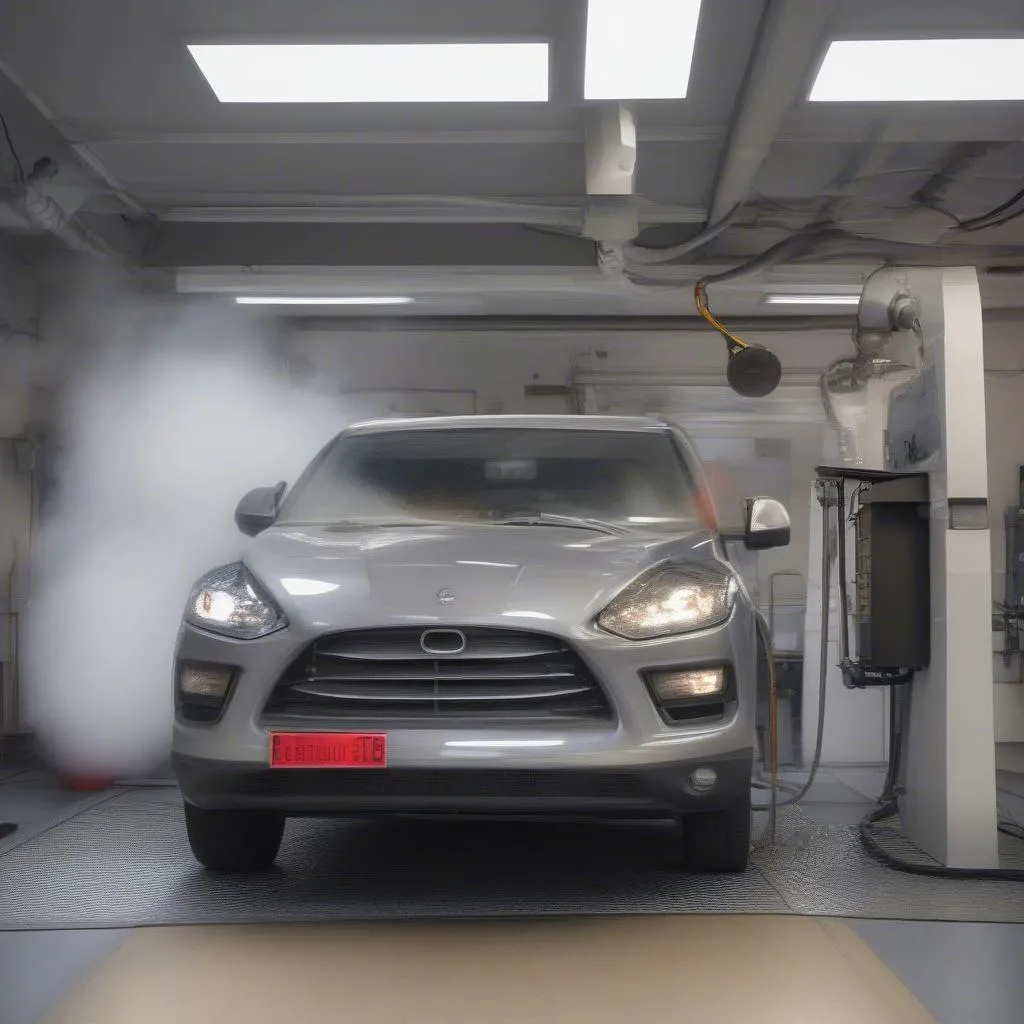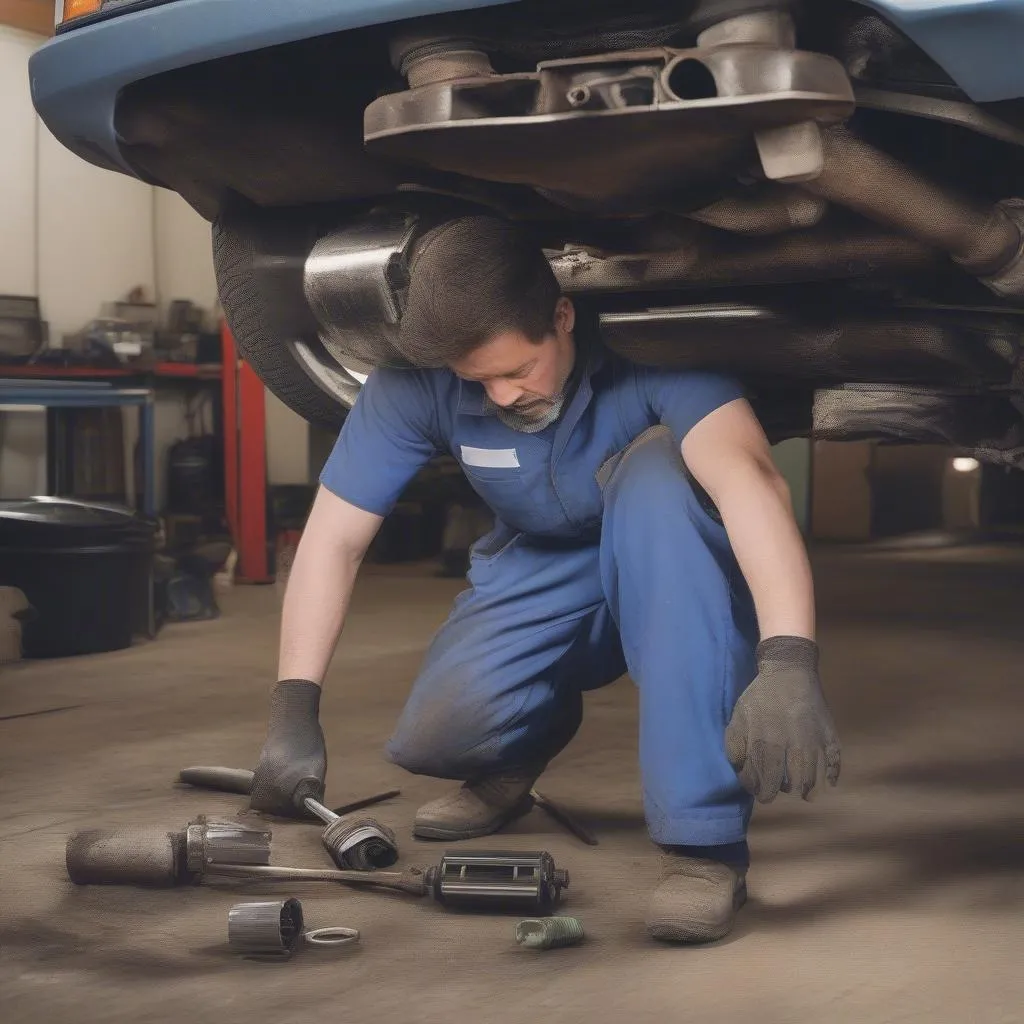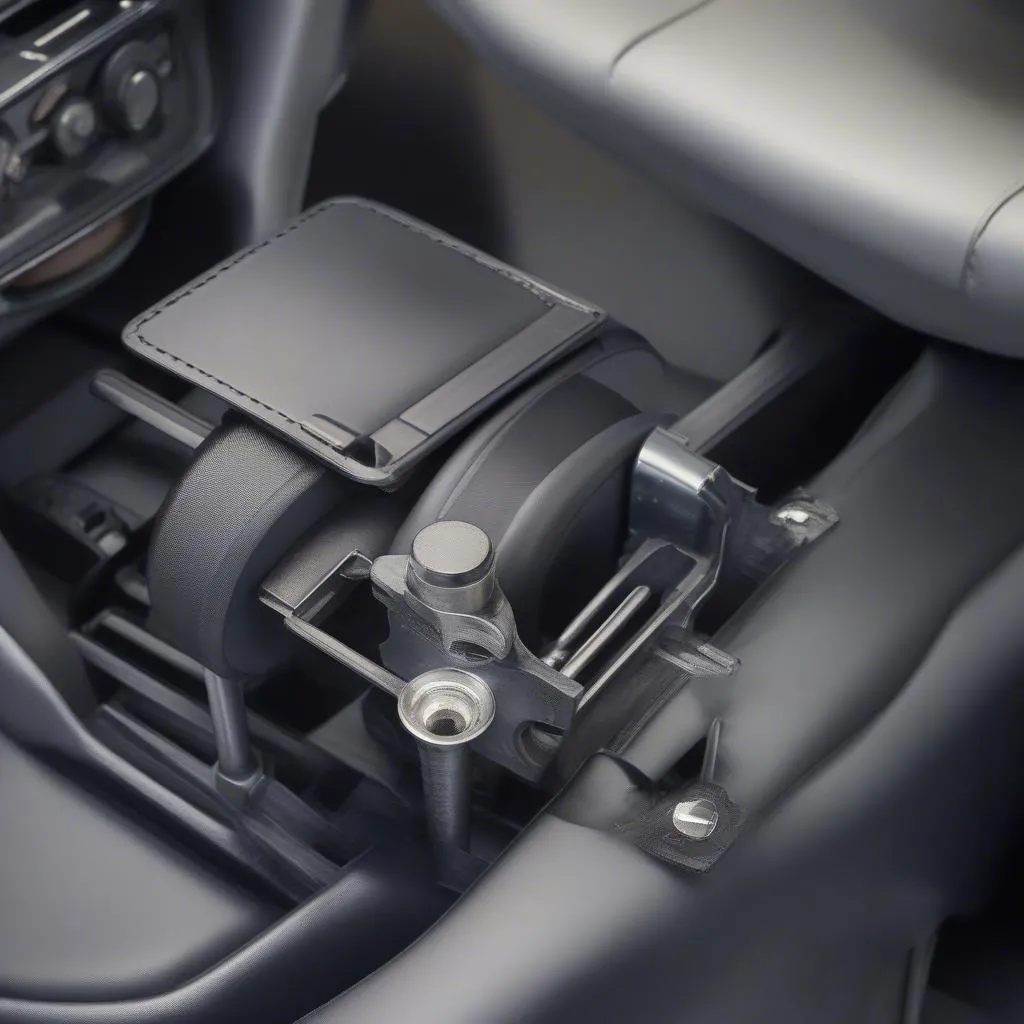If you’re experiencing performance issues with your 1990 Mercedes E300, a faulty catalytic converter could be the culprit. While this can seem like a daunting problem, this guide will walk you through the common causes, symptoms, and repair options.
Understanding the Problem
What is a Catalytic Converter?
Your car’s catalytic converter is a crucial part of the emissions system. It’s responsible for converting harmful pollutants in exhaust gases into less harmful substances before they are released into the atmosphere.
Why Does it Fail?
Over time, the internal honeycomb structure of the catalytic converter can become clogged or damaged. This can be caused by:
- Engine misfires: Unburnt fuel can overheat the converter, damaging its internal structure.
- Oil contamination: Leaking engine oil can coat the catalyst material, reducing its effectiveness.
- Physical damage: Impacts from road debris can crack or crush the converter.
 damaged catalytic converter
damaged catalytic converter
Identifying a Faulty Catalytic Converter
Recognizing the signs of a failing catalytic converter can save you time and money in the long run. Here’s what to look out for:
- Decreased engine performance: A clogged converter restricts exhaust flow, leading to reduced power and acceleration.
- Rattling noises: If you hear a rattling sound from beneath your car, especially when accelerating, it could indicate a broken internal honeycomb structure.
- Illuminated check engine light: Your car’s computer will often detect a failing converter and trigger the check engine light.
- Failed emissions test: A faulty converter won’t effectively clean exhaust gases, leading to a failed emissions test.
 car emissions test failure
car emissions test failure
Tools for the Job
Before attempting any repairs, gather the following tools:
- Car ramps or jack stands
- Socket set and wrenches
- Protective gloves and eyewear
- Penetrating oil
- New catalytic converter (if needed)
 mechanic replacing catalytic converter
mechanic replacing catalytic converter
Repairing the Catalytic Converter
Important: While this guide provides a general overview, always consult a professional mechanic for a proper diagnosis and repair.
1. Diagnosis: Start by connecting an OBD-II scanner to your car’s diagnostic port to read the error codes. This will help confirm if the catalytic converter is indeed the issue.
2. Inspection: Visually inspect the converter for any signs of physical damage, such as dents, cracks, or melted areas. Also, check for any leaks in the exhaust system leading to or from the converter.
3. Replacement: If the converter is confirmed to be faulty, it will need to be replaced.
* **Remove the old converter:** This typically involves unbolting it from the exhaust pipes. Apply penetrating oil to loosen any rusted bolts.
* **Install the new converter:** Ensure the new converter is correctly aligned and securely fastened.
* **Check for leaks:** After installation, start the engine and check for any exhaust leaks around the converter.4. Address underlying issues: It’s essential to address any underlying issues that may have caused the converter to fail in the first place, such as engine misfires or oil leaks.
Frequently Asked Questions
Q: Can I drive my car with a bad catalytic converter?
A: While technically possible for short distances, it’s not recommended. Driving with a bad catalytic converter can lead to further engine damage, reduced fuel efficiency, and legal issues due to increased emissions.
Q: How much does it cost to replace a catalytic converter on a 1990 E300 Mercedes?
A: The cost can vary significantly depending on factors like the brand of the replacement part, labor costs, and your location.
Q: Are there any aftermarket alternatives for catalytic converters?
A: Yes, several reputable aftermarket brands offer catalytic converters. It’s crucial to choose a high-quality converter that meets emissions standards for your vehicle.
Q: Can diagnostic software help pinpoint the issue with my catalytic converter?
A: Yes, professional-grade diagnostic software, like those offered by CARDIAGTECH, can provide more detailed information about the health of your catalytic converter and help pinpoint the root cause of the problem. This can be invaluable for accurate diagnosis and repair.
Conclusion
A failing catalytic converter can be a frustrating experience for any car owner. By understanding the common causes, symptoms, and repair options, you can address the issue effectively and get your 1990 E300 Mercedes running smoothly again. Always prioritize safety and consult with a qualified mechanic for any complex repairs.


